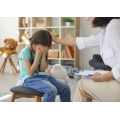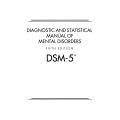ALL COURSES
BOOK NOT INCLUDED: Must purchase seperately on Amazon or at your local bookstore
This course will help clients overcome panic attacks, calm physical symptoms and reclaim their life. This is a concise, easy to read manual fully grounded in scientifically based clinical practice. It is sure to provide much needed guidance and assistance to anxiety sufferers.
Objectives:
- Understand panic and fear
- Learn techniques for treating panic
- Learn strategies for facing fearful situations
- Learn to replace anxious thinking
- Learn to confront physical symptoms
- Learn stress reduction excerises
#1 Great Reviews!
Course Description:
This course will identify factors that increase risk of aggression and violent acting out behaviors in individuals diagnosed with a mental health disorder. All disorders highlighted by the new DSM5, that correlate with a high risk of violence will be reviewed, including disorders that start in childhood and/or adolescence, which may vary over into adulthood. Also, identified will be biological, environmental, and psychosocial behavioral patterns that increase risk, plus explore the impact of co-occurring disorders on risk assessment. Targeted collaborative treatment interventions responsive to different levels of risk, diagnosis, and developmental stages will be identified.
Objectives:
- Identify mental health disorders and co-occurring disorders using the Diagnostic and Statistical Manual of Mental Disorders, fifth edition that pose a higher risk for aggression and violent behaviors.
- Identify biological, environmental and psychosocial behavioral patterns that increase risk for violence.
- Identify treatment interventions targeted to reduce or eliminate aggressive behaviors.
This course looks at a variety of case scenerios surrounding blended families.
"This was the best ethics course I've ever taken"- Pauline
Objectives:
- Understand how blended families are similar to and different from the traditional "intact" family.
- Learn about the integration process that blended families must achieve for optimal functioning.
- Identify seven ethical considerations in treating blended families.
- Learn to use a values-based approach to think through ethical dilemmas with this population
- Use five family therapy strategies when helping blended families integrate.
Meets Ethics requirements. This course will inform you on ethical issues that occur in clinical work with families, including divorce, custody conflicts, and boundary clarification in working with children, adolescents, adults, seniors, and guardians. Duty to warn responsibilities will be examined as they apply to domestic violence crisis. Responsibilities and duties of the clinician and the family will be covered. (booklet)
Objectives: Participants will be:
- Be familiar with the connection between values and ethics
- Aaware of of decision making steps and addressing ethical dilemmas
- Familiar with the requirements of informed consent
- Familiar with the NASW code of ethics concerning billing, fraud, honesty, conflict of interest, interruption of service privacy and confidentiality
Considerations in the treatment of post-deployment stress effects.
Objectives;
- Learn effective treatment responses
- Learn how the body responds to threat
- Understand the military culture
- Learn appropriate treatment considerations and deliveries
- Learn to use assessment instruments including suicide risk
- Learn ideas for re-balancing and self care
This on-line course is simple and straight forward to understanding the natural dying process. It will bring great comfort to careworkers in the Aging and Geriatrics field.
Objectives:
- Learn frequently asked questions from patients and family members
- Learn practical things that every family member should know
- Learn facts surrounding confusion and terminal restlessness
- Learn about the shutting down process of the natural dying process
- Learn the process of actively dying
- Learn important issues after the final death
***New Video Course!***
Course includes a PDF of presentation information, Video, and Online Exam.
Objectives:
- Recognize the difference between typical and atypical behavioral responses
-
Understand the A-B-Cs of behavior
- Identify common behavioral triggers
- Identify behaviors and their functions
- Identify common behavioral responses
- Explore strategies to address client behaviors
- Discuss the challenges of dealing with behaviors in a virtual world
Objectives:
- Define low risk drinking, at-risk drinking, problem drinking, and alcohol dependence in older adults
- Know drinking guidelines for adults age 65 and over
- Understand the prevalence of at-risk drinking, problem drinking, and alcohol dependence among older adults
- Identify signs and symptoms of alcohol problems in older adults
- Know how to use brief alcohol interventions with older adults
- Recognize barriers to intervention and treatment, and how to address them
Not only does the family influence the developmental course of alcohol use disorders, but the alcohol use disorders of individual family members influence the entire family's functioning and developmental outcomes of the system and its members.
Objectives:
-
Recognize a family systems perspective of alcohol use disorders;
-
Be familiar with family factors that increase or reduce risk of developing an alcohol use disorder;
-
Be familiar with family problems that may result from or co-occur with an alcohol use disorder;
-
Understand recent research concerning the relationship between family factors and recovery.
This course addresses the problems that alcohol can have on the family and intimate relationships.
Objectives:
1. Understand how alcohol effects the entire family
2. Learn the types of problems that co-occur such as violence, infidelity, jealousy, economic insecurity, and divorce
3. Learn brief and long term intervention approaches
BOOK NOT INCLUDED: Must be purchased seperately through Amazon or your local bookstore
The title says it all! This book is for professional and family members who are facing challenges within the parent child relationship throughout the ages of development.
Objectives:
- Learn why kids are aggresive
- Differentiate between anger, assertiveness and aggression
- Learn tips to assist in improving aggression
- Learn how to help parents teach ahead of time, set boundaries, and develop a spiritual foundation
- Learn strategies for building strong relationhips
This is an introduction and suggested refresher course to Autism Spectrum Disorders.
Objectives:
- Overview of Autism Spectrum Disorder (ASD) and the problems that may come accompany ASD
- Overview of diagnosis and available aids for families
- Overview of adults with ASD
- Learn treatment options of Autism Spectrum Disorder
- Overview of causes and treatment of ASD
Mental Health Professionals MUST hold teachers and paras accountable for sticking up for kids who are bullied! Why do we think bullying will go away without adult intervention? The emotional effects can lead to suicide.
Objectives:
- Learn the needs of children who are bullied
- Learn why children may not report bullying
- Learn the role of mental health professionals and how to intervene
Take an inside look at a parents findings after logging into her 13 year old sons social website page for 6 months. You will learn how bullying has changed and learn how to stop it.
Objectives:
- View a parents "inside look" at what social website looks like.
- Learn the facts surrounding bullying.
- Learn about the data surrounding cyberbullying
- Learn the overall signs and effects of bullying
- Learn about intervention and prevention surrounding bullying
- Learn the role of school administrators and mental health professionals
***New Video Course!***
Course includes a PDF of presentation information, Video, and Online Exam.
Objectives:
- Understanding Sensory Processing Disorder
- Challenges in Caring for Children with Sensory Processing Disorder
- What is "Typical" of these Children
- Modifications and Tools that Improve Treatment
***New Video Course!***
Course includes a PDF of presentation information, Video, and Online Exam.
Objectives:
- Identify Common Sleep Problems
- How it Impacts Daily Functioning
- How Sleep Changes with Age
- Steps to Take if Problems Persist
***New Video Course!***
Course includes a PDF of presentation information, Video, and Online Exam.
Objectives:
- Understanding types of visual impairments
- What is "Typical" about children with vision impairments
- How to best serve these children
- Tools that enrich the learning environment
This is a must read for all field workers and mental health professionals working in child abuse and neglect crisis intervention situations.
Objectives:
1.Understanding Crisis
2.Understand the elements of crises
3.Understand a workers vulnerability and safety measures
4.Learn burnout prevention tips
5.Learn crisis intervention goals and steps (Nine step model)
6.Learn treatment approaches and techniques including resistance
7.Understand common terms used in during crisis intervention
(NEW!)
Course Description
This easy to read course will enlighten every participant about the DSM5 and help you to make a competent diagnosis. Professionals will view the new changes which are intended to serve as a practical, functional, and flexible guide for organizing information that can aid in the accurate diagnosis and treatment of mental disorders.
Objectives:
• Look at the Concerns of the DSM5
• Evolution of DSM for teaching psychopathology
• Changes made to the DSM-5
• New Features in Each Diagnosis
Written by: David Jensen, PHD, LSCSW, LCMFT
The newly released Diagnosis and Statistical Manual has made many positive changes in philosophy, structure, and diagnoses. There is a new emphasis based on research findings of risk factors for suicide and on assessing the impact of an individual's culture on his or her symptoms. Based on research studies, the new manual eliminated, modified, and added disorders; did away with the multi-axial format; moved toward a developmental and lifespan approach; increased gender considerations; better organized diagnoses; limited its use forensically; educates on grief vs. depression and expands normal grieving time; and added the Emerging Measures and Models which include Cross-Cutting Assessment Measures.
Learning Objectives
Participants will be:
- Knowledgeable of the APA's philosophical goals in the structure and content of the Diagnostic Statistical Manual of Mental Disorders, Fifth Edition.
- Understanding of the shift to a linear diagnosis and the reasons for this shift.
- ·Familiar with the significant shifts in diagnoses, diagnostic criteria, and the re-organizing of diagnoses.
- ·Aware of the new section Assessment Measures including the Cross-Cutting Symptoms Measures, Clinician-Rated Dimensions of Psychotic Symptom Severity, and the World Health Organization Disability Assessment Schedule.
- Knowledgeable of the disorders found to be at higher risk for suicide and for violence.
 Shopping Cart
Shopping Cart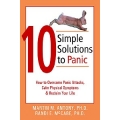


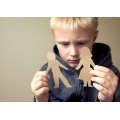






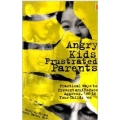





-120x120.jpg)
